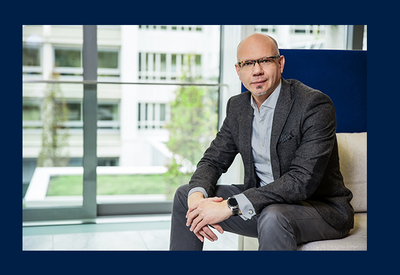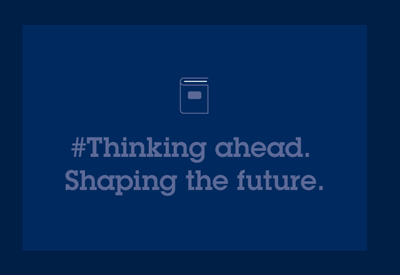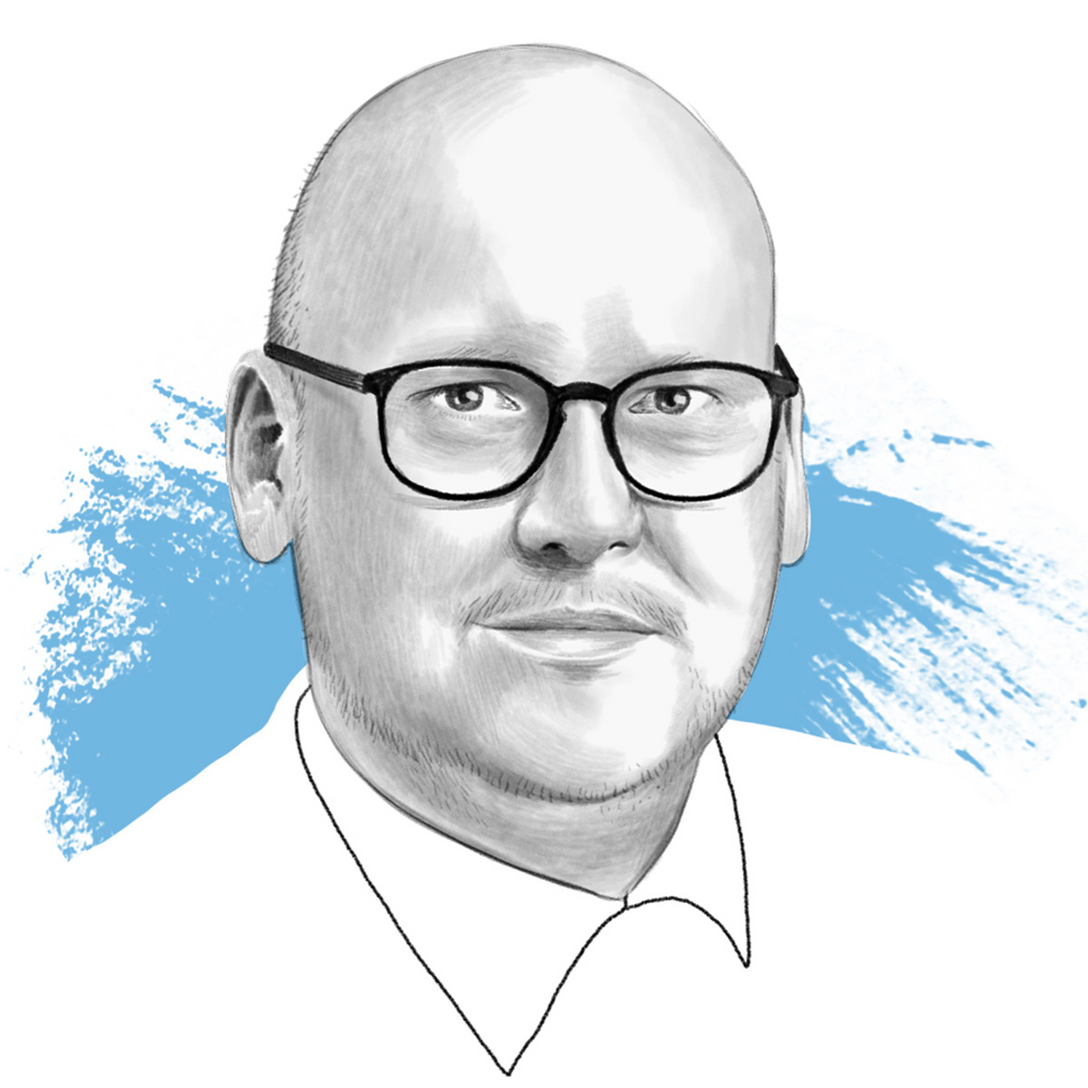YOUR COMPETITIVE ADVANTAGE.
Rethinking risks
Increasingly, environmental, social and governance (ESG) criteria are gaining significance, and the financial sector is no exception. How are property financing providers approaching the issue, and what does it mean for their business strategy and risk management? Christoph Reitze (Aareal Bank) and Matthias Arnheiter (Berlin Hyp) discuss the new opportunities that sustainability brings.
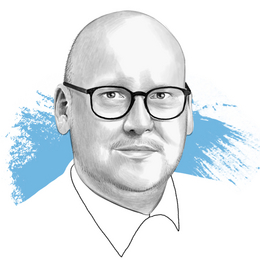
Christoph Reitze is Director of the Non-Financial Risks (NFR) division, which was established on 01 January 2020. His responsibilities include the ESG@AAREAL project where he oversees ESG risk management. His previous regulatory and risk management roles included Österreichische Nationalbank and KPMG Germany.
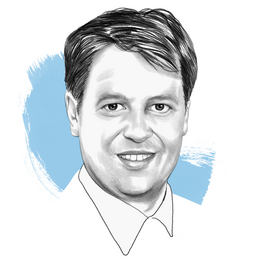
Matthias Arnheiter heads up Corporate Strategy and is responsible, amongst other things, for sustainability and innovation strategy. Sustainability is coordinated centrally through his team at Berlin Hyp and handled by an ESG Board helmed by the CEO.
Mr Reitze, Mr Arnheiter, what are the challenges property financing providers face when integrating ESG criteria into their business strategy and risk management?
Matthias Arnheiter: For us, the challenges begin with the question of what precisely are the actions we need to take that fall under the umbrella of “ESG criteria”. Environmental, social and governance criteria are interpreted differently by different stakeholders. That is why it is first of all so important to understand what the issue means for internal and external stakeholders and then to strategically harmonise these factors.
Up to now, sustainability was only discussed in connection with non-financial objectives. In future, this will be less and less the case. We have already embedded sustainability targets deeply into our strategic corporate objectives. The growing requirements to achieve these targets, in risk management for instance, present challenges. For example, additional data and IT infrastructures have to be established. We also have to determine what data we need and how they can be generated. To give you one example, up to now, the materials that were used in the construction of a building were of little importance in valuations. In the context of the circular economy, however, these sorts of criteria will play an important role in future because construction materials play no small role in a property’s CO2 footprint. When financing existing buildings, that poses challenges for us because the relevant information about what materials were used in the properties is simply not available.
Christoph Reitze: The central question for us is strategic positioning. What level is our ambition at? By defining our position, we are laying the groundwork for how our business strategy will take shape in the future, and ultimately risk management as well. One of the greatest challenges in this respect is striking the right balance between regulatory requirements on the one hand and commercial opportunity/risk management on the other. As Mr Arnheiter just said, the right informational foundation has to be established first because transparency over the portfolio based on qualitative standards is a basic precondition. Defining that in an internationally uniform way is a considerable challenge for us as a global bank, because global awareness for the issue still varies widely. At the same time, we are defining our level of ambition. Finding the solution has to be an iterative process. Stress tests and scenario analyses in particular are ways we are understanding causal chains, and how we are evaluating them.
To what extent does ESG integration require a cultural transformation within the company and its employees?
Reitze: For me, it is less about a cultural transformation or change, and is instead really about integrating ESG criteria into what is done on a daily basis in a targeted way. Only when we live ESG criteria in our day-to-day work, and reflect them in our processes and business decisions, can we be credible. That begins with management and has to be anchored in not only governance, but also every other business division like Risk Management, IT or Sales, all the way to relevant product development. Communication – both external and in particular internal – is especially important to foster a shared understanding of these values.
Arnheiter: The credibility Mr Reitze mentioned is fundamental in this context, not just externally but internally as well. That credibility can be bolstered by defining concrete shared targets that have to be complied with – and ultimately achieved – collectively. At Berlin Hyp, for example, we formulated our new sustainability agenda in an agile overarching working group and defined clear overriding objectives: firstly, instilling transparency in our property portfolio; secondly, having green buildings account for one third of our portfolio by 2025; and thirdly facilitating the financing of transformation measures in the construction sector with a new product, called “transformation lending”. The targets we have set apply to and are consistently pursued by all of the employees in every business division.
How does one operationalise ESG targets and risks, and make them quantifiable?
Reitze: Making them quantifiable is ultimately easier than one might think, because every time we finance a green building or a loan for renovations to increase energy efficiency, we are not only making a direct contribution towards climate and environmental protection, but we also get access to the quantifiable climate protections impacts that can then flow into a data pool. Banks are without a doubt a strong multiplier that can dramatically drive sustainable development and in so doing deliver quantifiable impacts. The important thing for operationalising things is holistically unpacking ESG criteria. Not launching a product in isolation, but rather allowing relevant criteria to influence planning and consistently incorporating them into every business segment.
Arnheiter: It is important to keep an eye on what incentivises clients. It is similar to what is happening with electrical cars, which are also receiving government support. With our transformation lending, for example, we are putting our faith in this sort of incentive setting. We have to structure the product offering as attractively and as simply as possible and make it clear to clients that investing in sustainability ultimately increases the value of the property.
To operationalise it, we need a shared understanding of what ESG-consistent business means in the first place. How do we reflect that in data, how will the data be handled? It is a wide-ranging topic and EU norms, such as the taxonomy for instance, are still being discussed. In order to develop successful products, we need a reliable framework. That is the only way we can convince clients that investing in sustainability generates added value for them at the end of the day.
Reitze: Yes, that is a fascinating point. Ultimately, we have to succeed at bringing together our economic goals with what is undoubtedly an important political and social duty, like facilitating sustainable development using attractive products. To that extent, ESG integration is more than a question of data management or risk controlling. The question of strategy and products that generate economic and social added value equally is of central importance.
Mr Arnheiter, Mr Reitze, thank you for sharing your thoughts.
Controlled offensive
Seizing opportunities – without losing sight of the risks. The more complex the world becomes, the more efficient risk management must be.

![[Translate to English:]](../../fileadmin/_processed_/b/6/csm_aareal_navi-teaser_konzern@2x_f3a163abdc.png)

![[Translate to English:]](../../fileadmin/_processed_/f/e/csm_aareal_navi-teaser_transaktions-highlights@2x_475e048233.png)






